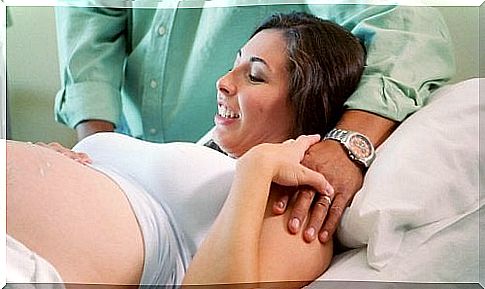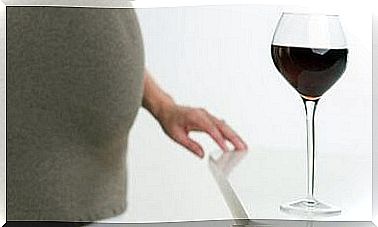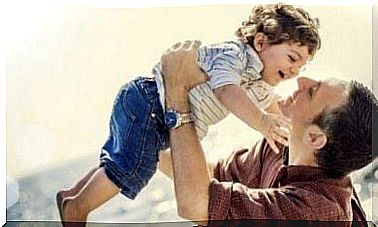Pushing In Childbirth: What Are They And How Are They Carried Out?

There are different phases that are part of the process for a baby to come into the world. It is known as pushing in childbirth to the pushes that the mother makes during the expulsion period, which are responsible for facilitating the exit of the baby through the birth canal.
After natural dilation, labor pushing occurs spontaneously. The mother begins to feel like pushing when the fetus starts looking for a way out. In new mothers, this period can last up to 3 hours, while a mother who has already given birth before can decrease this time to 1 hour.
Types of pushes in childbirth
There are two types of pushing in labor. While spontaneous pushes occur naturally and guided by the mother, directed pushes occur when medical personnel attend the delivery. Here we explain them in detail:
Spontaneous pushing
Spontaneous or physiological pushing occurs when the mother feels the need to push, following her natural instinct for the process. Experts agree that they prefer that the pushes in labor occur naturally and are guided by the mother, since this does not alter the process and duration of labor. In addition, studies indicate that they can reduce the chances of instrumental deliveries, benefit the pelvic floor and minimize the risks of perineal trauma.
Directed pushing
Directed pushing is done when medical staff direct the birthing process, that is, they tell the mother when to push based on monitoring contractions. The decision to perform directed pushing is usually made when the mother does not notice the natural urge to push, which could be due to the administration of epidural anesthesia.

Disadvantages of directed push
- Increased risk of damage to the pelvic floor structure.
- Increased stress and maternal fatigue.
- Increased chances of perineal tears or episiotomy.
- Abnormal fetal heart patterns.
- It can cause urinary incontinence.
- Higher rates of forceps or cupping assisted births and caesarean sections.
- It limits the mother from giving birth in a natural way.
How to perform push-ups in childbirth correctly
Although it is natural for the mother to feel the need to push, it is important to match the push with the contraction, which brings the two forces together and makes the baby descend more quickly. These pushes in childbirth are caused by the baby’s head that exerts pressure on the mother’s pelvic floor.
To perform the push correctly, force must be exerted by contracting the abdominal wall and pushing down, and whenever possible accompanying the contraction process. Breathing plays a very important role because the mother can be much stronger if she controls her breathing.
Here we explain in steps how they should be done:
- You must associate the push with the contraction and work both forces at the same time.
- The mother must contract the abdomen and at the same time push down.
- The woman in labor must control her breathing in order to exercise control over her strength.
What is the best way to bid?
Some experts believe that the conventional approach to pushing methods during labor needs to be rethought. They emphasize that it is most advisable for mothers to let their bodies tell them when and how to push. They comment that while directed pushing can be very helpful, it should not be used routinely.

On the other hand, the World Health Organization (WHO) recommends that it is best to allow mothers to push spontaneously and advises against letting them hold their breath and push for a long period of time. This process also depends on the mother and if she correctly notices the signs of labor.
With this, it is concluded that the most advisable thing during childbirth is that the process develops spontaneously and is not forced, waiting for the contractions so that the mother can have more strength. Similarly, during prenatal visits, any concerns can be consulted with the family doctor.










